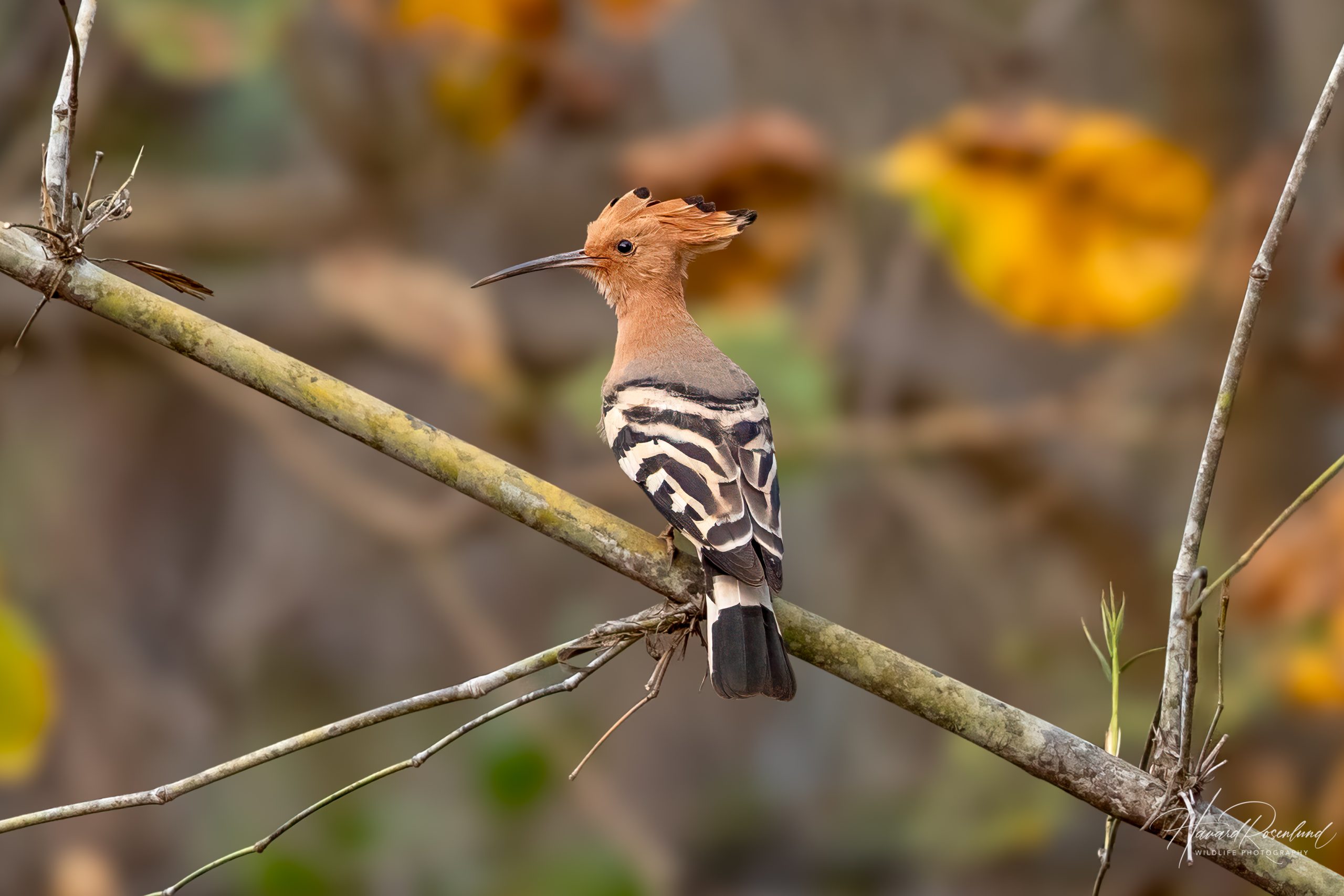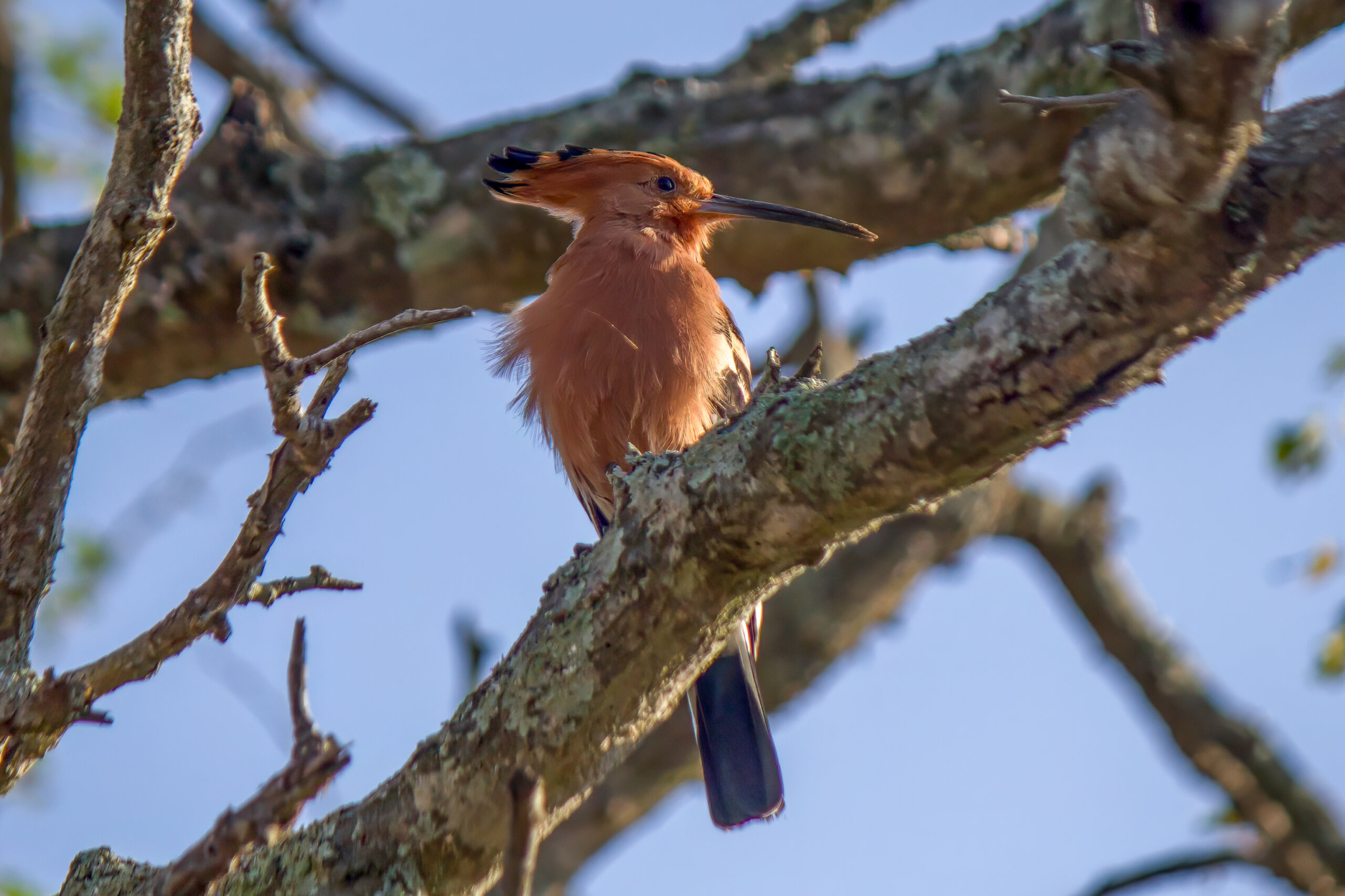Description
The Eurasian hoopoe (Upupa epops) is a distinct and unique bird widely distributed across Europe, Asia, and North Africa. It features a long, slender, slightly curved bill, and a prominent crest that it can raise and lower. The plumage is a combination of cinnamon, black, and white, with the body predominantly covered in a warm, rusty-orange color. The wings and tail display bold black and white stripes. It measures around 25-32 cm (10-12.5 inches) in length, with a wingspan of approximately 44-48 cm (17-19 inches). It can be distinguished from the African hoopoe (Upupa africana), found in Africa south of the Equator, by its lighter coloration and the presence of white towards the black edges of its crest. African hoopoes are also non-migratory, whereas the Eurasian hoopoe is migratory across much of its range.
Diet & habitat
Eurasian hoopoes inhabit a range of environments including woodlands, savannas, grasslands, and even cultivated areas such as orchards and vineyards. They are often found in regions with soft ground, which facilitates their foraging behavior. Their diet mainly consists of insects and other small invertebrates. They use their long bills to probe the ground, leaf litter, or even animal droppings for prey. They are particularly fond of beetles, larvae, and caterpillars but will also eat small reptiles and amphibians when available.
Behavior
Hoopoes are generally solitary or found in pairs, except during the breeding season when they may be seen in small family groups. They are known for their unique, undulating flight pattern, which resembles that of a butterfly. These birds are also quite vocal, producing a distinctive “oop-oop-oop” call, which is the origin of their name. This call is often repeated several times and can be heard over long distances.
Migration
Eurasian hoopoes are migratory birds. Populations from the northern parts of their range, such as Europe and northern Asia, migrate to tropical and subtropical regions in winter, traveling as far as Central Africa and South Asia. Migration typically occurs in late summer and autumn, with birds returning to their breeding grounds in spring. There are also individuals in their wintering grounds that are sedentary year round and do not migrate north to breed.
Nesting
The breeding season of the Eurasian hoopoe varies by region but generally occurs from April to August. Hoopoes are cavity nesters, often using holes in trees, walls, or even man-made structures. The female lays between 5 to 12 eggs, which she incubates for about 15 to 18 days. During the incubation period, the male brings food to the female. Once hatched, the chicks are altricial, meaning they are born helpless and require significant parental care. Both parents feed the chicks, which fledge after about 26 to 29 days.
Status
The Eurasian hoopoe is currently classified as least concern by the IUCN Red List, indicating that the species is not at immediate risk of widespread decline. However, local populations may be threatened by habitat loss, use of pesticides in agriculture, and human disturbance.





